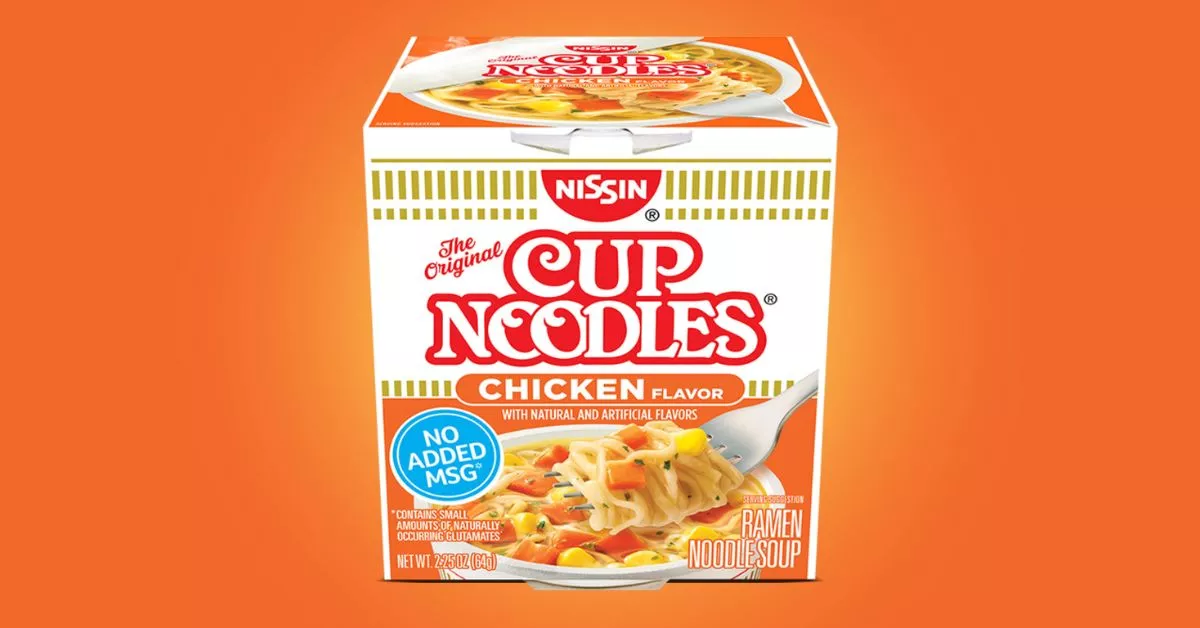The news of Nissin updating the design of its Microwave Cup Noodles to be made out of paper and microwaveable has indeed created some buzz and perhaps a bit of confusion among fans. For years, Cup Noodles were commonly prepared by adding hot water to the cup, so the introduction of microwaveable packaging may be seen as a shift in how these instant noodles are intended to be prepared. It’s likely that some long-time Cup Noodles consumers will need to adjust to this change in preparation methods. Additionally, the switch from polystyrene to paper packaging aligns with the growing concern for sustainability and reducing plastic waste. It remains to be seen how these changes will be received by Cup Noodles enthusiasts and whether they’ll embrace the new packaging and preparation method.

It’s interesting to see the reaction from some people who have only now realized that the original Cup Noodles were not intended to be microwaved, despite the clear “Do not microwave” label. It’s a reminder that consumer habits can sometimes develop independently of the intended use of a product. For many, the convenience of using a microwave to prepare quick meals may have led to the assumption that Cup Noodles could be microwaved safely. Nissin’s decision to update the packaging and make Cup Noodles microwavable may help clear up any confusion and align the preparation method with consumers’ habits. It’s a good example of how consumer feedback and expectations can influence product design and packaging over time.
The world of instant noodles is indeed diverse, with various brands and packaging types available, each with its own specific instructions. While some cup noodles have long been microwave-friendly, others may not be suitable for microwave use, as indicated by the instructions on the label. It’s essential for consumers to read and follow the specific guidelines provided for the product they are using to ensure safe and convenient preparation. The recent change by Nissin to make their Microwave Cup Noodles reflects the evolving preferences and expectations of consumers, and it’s a good example of how brands adapt to meet customer needs and convenience.
The way people prepare instant noodles can indeed vary based on cultural and regional factors, as well as the kitchen appliances and gadgets they have at their disposal. In some regions, using electric kettles for boiling water is a common and convenient practice, while in others, microwaving may be the preferred method. It’s interesting to see how culinary habits and preparation methods can be shaped by cultural influences and the availability of kitchen equipment. This recent revelation about Nissin’s Microwave Cup Noodles packaging serves as a reminder of the diversity in food preparation practices around the world.
Microwaving polystyrene containers not labeled as microwave-safe is generally discouraged due to concerns about the potential release of substances like styrene. While many plastic containers are designed to withstand the heat generated by microwave ovens, those not explicitly labeled as microwave-safe may break down or leach harmful compounds when exposed to high temperatures. This is why manufacturers often specify whether their products are safe for microwave use.
It’s important for consumers to be aware of these guidelines and follow instructions on product labels to ensure safe and healthy food preparation practices. Additionally, it’s encouraging to see companies like Nissin making efforts to improve the safety and environmental impact of their packaging materials.
ALSO READ: James Webb Space Telescope Uncovers Astonishing Discovery: The Enigma of Jupiter Mass Binary Objects
Occasional exposure to styrene from microwaving food in polystyrene containers is not likely to cause immediate or noticeable harm. However, the long-term effects of regular and consistent exposure to substances like styrene are still a matter of ongoing research and debate. While the risk may be minimal, it’s generally advisable to follow the manufacturer’s instructions and use microwave-safe containers for heating food in microwave ovens to minimize any potential health risks.
As with many aspects of nutrition and food safety, moderation and adherence to recommended practices can help reduce potential risks associated with food preparation and consumption. Using microwave-safe containers and following product labels is a straightforward way to promote safe and healthy food habits.
The structural integrity of polystyrene containers, like those used for Microwave Cup Noodles, can indeed be compromised when microwaved. These containers are designed for one-time use, and heating them in a microwave can lead to warping, melting, or cracking. When this happens, there is a risk of hot liquid and steam spilling out, potentially causing burns or other injuries.
The study mentioned highlights a specific issue with childhood burns associated with instant noodles. The narrow bases of Microwave cup noodles can make them less stable and more prone to tipping over, leading to spills and accidents, especially for children. It’s important to exercise caution and follow the recommended heating instructions when using microwavable food containers to avoid accidents and burns, particularly when preparing hot foods or beverages.
Safety is paramount when using kitchen appliances like microwaves, and it’s essential to be aware of potential hazards and take appropriate precautions to prevent accidents and injuries, particularly involving children.
Nissin’s decision to update the packaging of its iconic Microwave Cup Noodles aligns with a broader environmental commitment, reflecting the growing emphasis on sustainability in consumer products. By making the cup microwaveable and using 40 percent recycled fiber, eliminating plastic wraps, and introducing a 100 percent recycled paper sleeve, Nissin is addressing environmental concerns related to packaging materials. Polystyrene, which was previously used in the cups, poses recycling challenges, and it’s encouraging to see companies making efforts to reduce their environmental footprint. The shorter heating time is another added convenience, saving consumers precious seconds in their busy lives. It’s a good example of how innovation and environmental consciousness can go hand in hand to improve product offerings.









